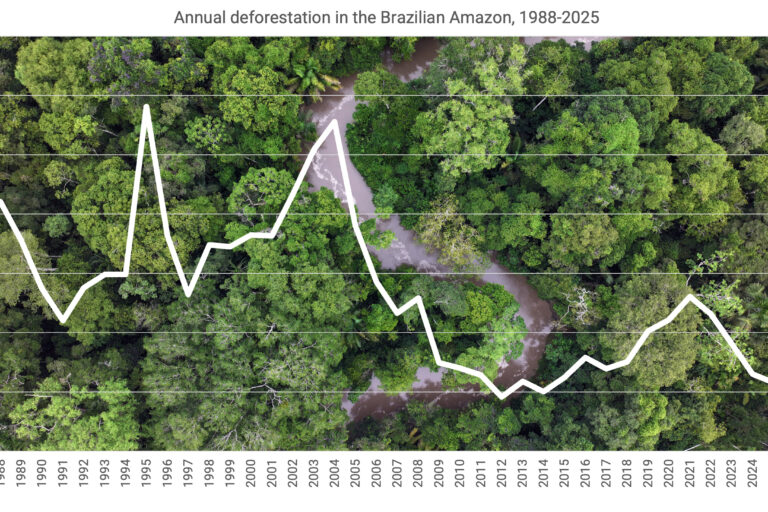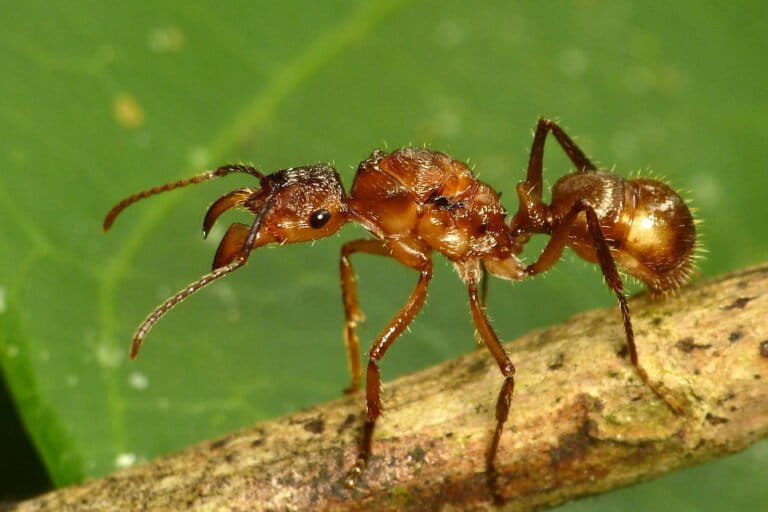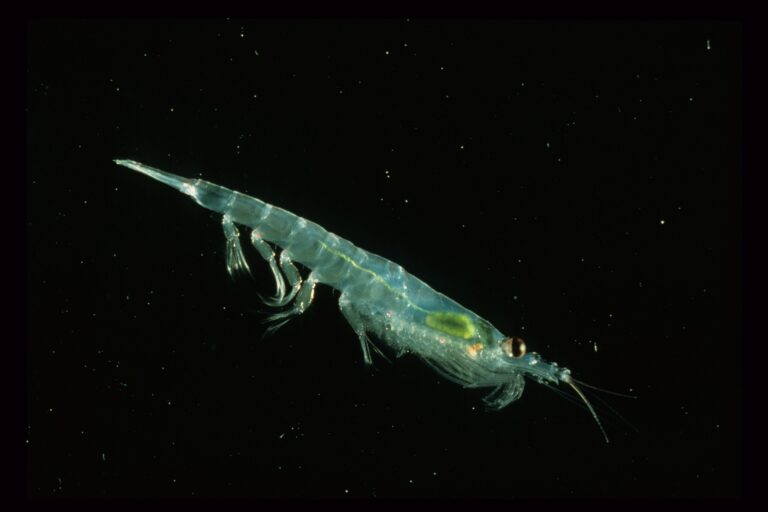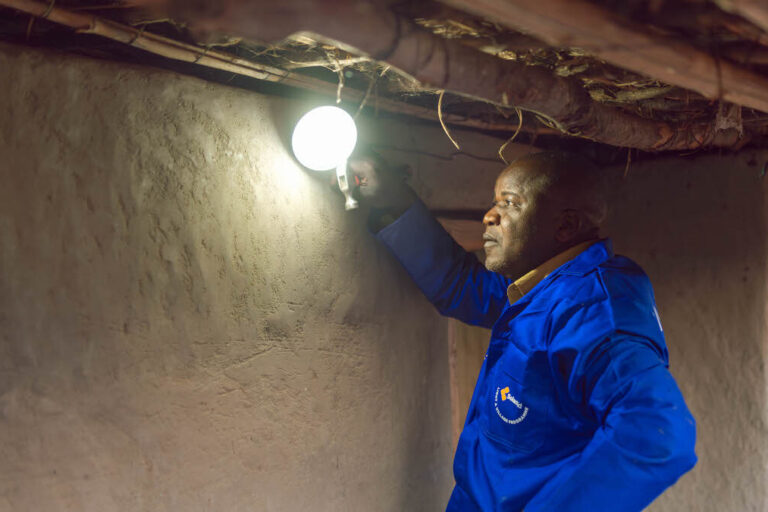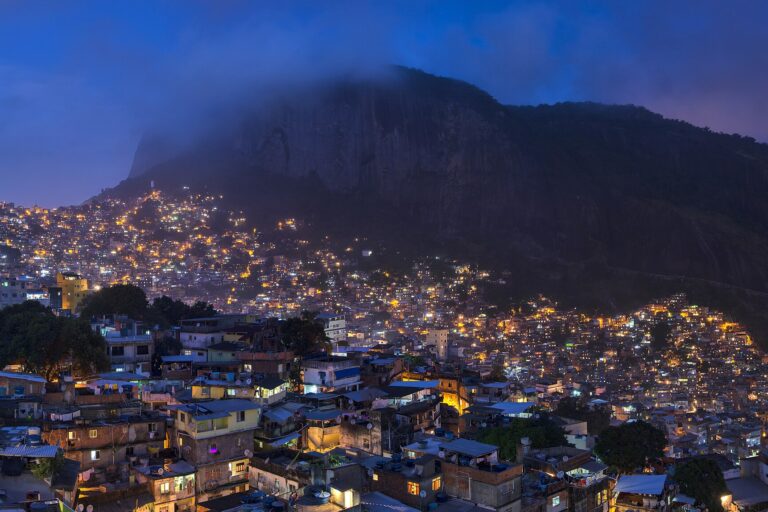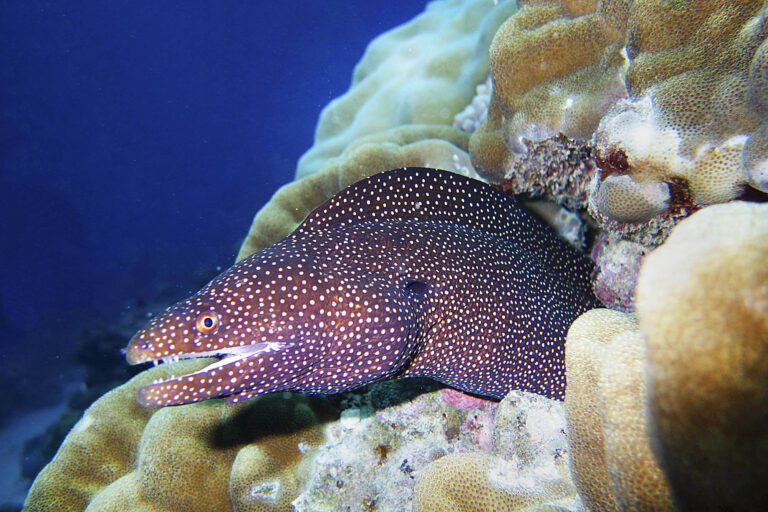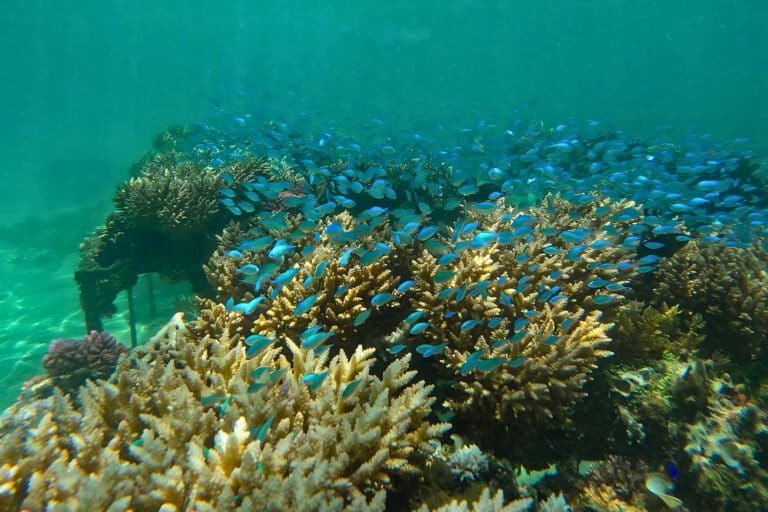- Having survived Spanish colonizers and internal conflict, climate change and deforestation pose new threats to the cultural survival of the Arhuaco indigenous peoples.
- The Arhuaco people in Colombia describe themselves as global custodians of the world who bear the responsibility for the wellbeing of the mountains.
- These so-called indigenous “forest wardens” are sounding the alarm over fears that mankind is irreparably impacting and harming the environment.
VALLEDUPAR, Colombia – Although the Arhuaco indigenous peoples of Colombia’s coastal mountain range — the Sierra Nevada de Santa Marta — are known for their century-long track record of environmental protection, their cultural survival and preservation of the mountain ecosystems are at risk. A new initiative that looks to preserve biodiversity and replant forests under indigenous control could help turn the tide, though.
Colombian President Juan Manual Santos recently announced the Forest Wardens Heart of the World program, which entitles the Arhuaco with 500 hectares (1,253 acres) to safeguard in the region.
“We now have peace, but it forces us to act on another front,” Santos said on a recent visit to Nabusímake, the Arhuaco capital. “Peace with nature, we have to embrace nature and reconcile with her.” Colombia ended it’s over half-a-century long conflict with the country’s largest guerrilla force, FARC, last year. The Arhuaco people and their territory were deeply impacted by the conflict.

A major aim of the Forest Wardens program is to diminish human pressure on regional biodiversity and stop the surge of large-scale farming threatening fresh water sources. The coastal mountain range of the Sierra Nevada was declared a Biosphere Reserve and World Heritage Site in 1979 by UNESCO, and supplies water to 18 municipalities in Colombia.
At least 70 percent of environmentally-sensitive zones under the program are destined for natural regeneration of ecosystems and about 30 percent can be used for the development of food sovereignty programs and productive projects. Indigenous peoples often need a smaller percentage of land for sustenance, according to Colombia’s Ministry of Environment.
The program has been in existence in some form since 2004, and became part of public policy in 2015.
There have been two other programs with the same objective in recent years: to buy lands for indigenous peoples with the aim of installing them as protectors. Between 2007-2010 the Environmental Program of the Sierra Nevada de Santa Marta constructed 10 cultural villages in the ancestral territory of the four indigenous groups of the Sierra Nevada. It was supported by the Presidency of the Republic. Land was bought around the ten villages and formed the cordon ambiental de la Sierra Nevada de Santa Marta (the environmental “cord” of the Sierra Nevada de Santa Marta).
The villages were constructed to “satisfy the social necessities as health, education, electricity and drinkable water,” according to Jorge Carpio, who represents the environmental authority of Colombia’s Cesar department. A total of 10,732 hectares (26,519 acres) were bought by 2013.
Later, but before the apparent suspension of the Environmental Program of the Sierra Nevada de Santa Marta, indigenous authorities secured inclusion of the Forest Wardens Heart of the World program in the National Development Plan of 2014-2018, making it official public policy. It was within this framework that the Arhuaco were awarded the right to buy 500 hectares on February 25.

According to Hermes Torres, an Arhuaco leader and secretary of the general counsel of the Arhuaco resguardo, it is just one more step toward regaining control over their ancestral lands. Resguardos are collective indigenous territories where the Arhuaco are the socio-political authority. The Arhuaco ultimately plan to pursue control over a total area of more than 190,000 hectares (almost half a million acres).
They face a legion of challenges, though. Colombia is highly susceptible to climate change and the Sierra Nevada mountain range where the Arhuaco live, on the Caribbean coast, faces regional threats from extreme drought, illegal logging and surging mining operations.
Calculations by indigenous groups in the area — including the Arhuaco, Kogui, Wiwa and Kankuamo — show that there are 395 mining and energy titles, some of which are grouped together to amount to one project, while others are waiting for licenses to operate in the Sierra Nevada region. Those projects are in conflict with the resguardos.
Carpio notes that you can see problems just by consulting different maps. “You observe overlapping requests for mining titles with the indigenous Arhuaco resguardos and with a nature reserve of civil society,” he said.
The land of Arhuaco forest wardens
The Sierra Nevada of Santa Marta is one of the most important ecological areas of Colombia, but has been pressured by more than 60 years of political violence, the impact of global warming and surging extractive and agro-industrial projects.
The Forest Wardens program is an initiative that tries to counter man-made influences that harm the environment and enables the local experts of nature preservation — the traditional inhabitants — to fulfill their role as caretakers.

Guillermo Torres, with the conservation and sustainable development foundation Pro-Sierra, said in an interview that a multi-temporal analysis from satellite images and vast fieldwork used to calibrate the images shows that 83 percent of the Sierra Nevada’s forests have been affected by human activity. The impact is worse near areas where humans have settled, and mainly result from deforestation, forest fires and the expansion of agricultural and cattle frontiers.
Environmental threats such as these are taken very personally by the Arhuaco. They describe themselves as global custodians of the world who bear the responsibility for the wellbeing of the mountains.
“That is the thought, the philosophy, our knowledge – the commitment that man has with nature,” Hermes Torres explains. “We are a part of this great natural world. We are the caretakers and keepers of the medium we live in. Therefore there is a spiritual and material commitment.”
A world apart
A trip into the mountains to visit the Arhuaco begins at Valledupar, the capital of Colombia’s Cesar department. Hours away from entering the isolated mountain range between the city and the Caribbean coast, the climate is dry and hot. At the first stopover in Pueblo Bello, indigenous peoples in their unique dress of white tunics and hats begin to appear.
It’s an arduous journey to reach the Arhuaco capital Nabusímake, which means “the land where the sun is born.” It entails a two-hour trip through the mountains — full of slippery, bumpy but first class off-road action in a Toyota Land Cruiser — that leads to the entrance of the village at an altitude of 2,000 meters (6,561 feet). Upon arrival, the gates of their settlement are controlled by a few indigenous guards who monitor incoming visitors. Access to outsiders is highly restricted.
The families of Nabusímake dwell in mud houses spread out over an area covered with green hills and surrounded by mountains. Small patches of agricultural land dressed up with flowers including cayenne, hydrangea and dahlia alongside small creeks and the San Sebastián River make Nabusímake seem like a fantasyland. It’s a place of utmost importance for the indigenous peoples.

There are four indigenous populations that inhabit the Sierra Nevada: the Kogui, Kankuamo, Wiwa and Arhuaco people. With more than 22,000 members, the Arhuaco are the largest group, but their existence has been under constant threat. Arhuaco territories have been traversed by all the parties in Colombia’s internal conflict and used as a drug trafficking route. Illicit crops were grown on deforested areas by illegal armed groups.
Though the indigenous peoples consume the coca leaf according to ancestral customs, they decided to counter large coca plantations that provided coca for manufacturing cocaine. The Kogui and the Arhuaco started a joint campaign, verified by the United Nations Office on Drugs and Crime (UNODC), to manually eradicate illicit crops, for which large swaths of lands were deforested.
A history of threats
Over the course of time, the Arhuaco have been presented with myriad problems that posed serious threats to their customs and cultural survival.
“Here the country’s problems are summarized,” Arhuaco leader Hermes Torres says while chewing on a handful of coca leaves with a poporo in hand. The poporo is a container with a mix of lime and coca leaves that are traditionally consumed to gain energy and meditate. Carefully weighing his words, Hermes narrates the darker days of the Arhuaco.
The Spanish conquest chased the Arhuaco higher into the mountains, but the Capuchin mission got to Nabusímake in 1916 and, among other maligning acts, “cut the hair of the children and prohibited them from speaking the indigenous language,” according to Hermes. He describes it as a process of “evangelization.” In 1982, the Capuchins were peacefully expelled from the community, but if missionaries come back now they are thrown into an Arhuaco jail before being sent away.
Along the way, many forests were destroyed by illegal marijuana plantations during the bonanza marimbera in the 1980s. Criminal groups entered the mountain range to eradicate large swaths of forest to plant marijuana. Coca bushes and opium poppy were sown to a lesser extent. After the marijuana boom, guerrillas entered, according to Hermes.
The indigenous leader says that the Arhuaco were killed by guerrillas and that youngsters were forcibly recruited, which led to the stigmatization of some community members as guerrilla collaborators. This gave the national army an excuse to enter Arhuaco territory and go after the guerrillas, but the indigenous peoples were often implicated in their actions.
“There is still a mentality in which the indigenous struggle is related to the armed struggle, which does not have anything to do with us who strive for our rights and recognition of who we are,” Hermes says.
Hermes complains that many farmers displaced by the conflict have ended up occupying indigenous lands. Paramilitaries aimed to eliminate guerrillas and control valuable drugs trafficking routes, but the indigenous peoples got stuck between the warring groups for years. His own life was threatened and his father and two other Arhuaco leaders were kidnapped and murdered in 1990. Both the army and paramilitaries were allegedly involved, but the case remains open.
In more recent years, right-wing paramilitaries have appeared in the region. New coca bush and opium poppy plantations have pushed the Colombian government to start campaigns of aerial spraying in which large swaths of forest are fumigated with the controversial herbicide glyphosate.
The aerial fumigations, according to Carpio, have “contributed to further deteriorate the few forest relics that the illicit crops had left.”
Colombia’s difficult relationship with nature
The Arhuaco remain skeptical over President Santos’s promises, but they welcome the Forest Warden program as part of their work to protect their at-risk ecosystems.
Part of that work includes their practice of sustainable agriculture. Wilber, (who declined to give his last name) is an Arhuaco with his own parcel of land. He says that they are lucky to live in a fertile ecosystem that requires minimal intervention.
“In our conception the land gives permission to every plant that can be there, the only thing we have to do is to take care of the space,” he said, explaining how growth and reforestation naturally occur. “Nature itself will give what it has.”
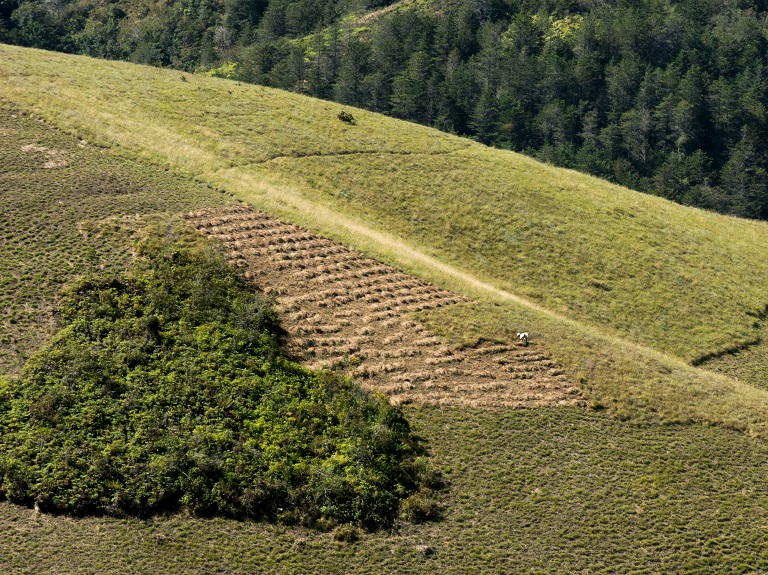
Mixed feelings continue to dominate the Arhuacos’ perception of state-funded forest preservation projects. Although Hermes says he is pleased with the lands that will be under their control thanks to the Forest Wardens initiative, he thinks the government is not completely on their side.
“Today, with the current state policies, they are looking again to the territories of the indigenous, but rather to the commodities and environmental services, especially at what is hidden in the ground,” he said.
Hermes fears that both regional and national Colombian government entities are mainly interested in activities that could continue to damage the Sierra Nevada. Being caretakers, the Arhuaco cannot prevent the future collapse of an entire ecosystem by just being in charge of a part of it. Regaining indigenous control over the complete extension of their ancestral lands, and the expulsion of energy and mining projects in the Sierra Nevada remains their ultimate goal.
“Beyond political and economic commitments is the commitment to guarantee the existence of human life and life in general,” Hermes said.
Banner image: Indigenous Arhuaco peoples ride toward the forest in Colombia. Photo by Bram Ebus for Mongabay.
Bram Ebus is a freelance journalist based in Colombia. You can find him on Twitter at @BramEbus.
FEEDBACK: Use this form to send a message to the author of this post. If you want to post a public comment, you can do that at the bottom of the page.






